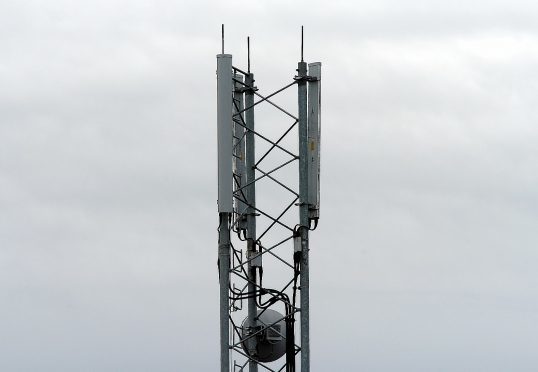Changes to the way in which landowners are paid for having a mobile phone mast on their land could hamper, rather than improve, rural mobile phone coverage, warns a leading land agent.
According to Strutt & Parker’s telecoms specialist, Ian Thornton-Kemsley, proposals to reform the Electronic Communications Code have major implications for landowners across the north and north-east.
Mr Thornton-Kemsley, who is based at the company’s office in Banchory, said proposals could see landowners paid compensation for having the mast on their land, rather than a market rent which is currently the norm. The compensation figure would be drastically lower than rent. This, he said, would lead to more and more landowners saying no to telecoms operator requests to put masts on their land.
“Many property owners now see having telecommunications equipment on their property as a fetter on potential redevelopment opportunities and a significant inconvenience, due to the need for maintenance and upgrading access,” said Mr Thornton-Kemsley.
Aberdeen-based independent consultant James Dick said landowners could receive up to 1,000 times less for renting out land for masts as a result of the new rules.
He said: “New agreements are set to be based on the market value of the land taken in its agricultural state, not the market value for the telecoms operator. That means that whereas at present a telecoms mast taking up a 20 by 20 metre site might be rented for £5,000 a year, if it was let at its agricultural rented value of perhaps £50 per acre, the rent would be over about a 10th of an acre, and the rent would therefore be £5 per acre per annum. If it were to be based on the loss incurred, the sum might be greater, but even with a loss of (say) £200 per acre in net margin, this would still only result in an annual payment of £20 per site.”
Both agents also said landowners needed to be aware of new proposals to give private companies wider compulsory purchase powers to force their way on to a potential mast site.
Mr Thornton-Kemsley said: “The government intends to allow operators to access land quickly ‘even while valuation is still being resolved’. This effectively means that landowners could find their property summarily taken for telecoms development and that their lawyers have to fight it out in the tribunal before they know what sum they are to be paid – unless they accept whatever is offered them by the operator.”
Mr Dick said operators may also look at terminating existing agreements in order that they could put new agreements in place at a reduced rate. He said the proposals would not improve communications in the countryside without “considerable and significant dispute”.
A Department for Culture, Media and Sport spokesman said: “The changes we are making will make it easier for telecoms companies to roll out vital infrastructure, upgrade their equipment and get faster access to sites to maintain services. Landowners will of course receive fair payment for land, but digital connectivity is essential for rural communities, and this change is needed to help expand UK networks faster and further to reach those communities most in need.”
Lack of mobile coverage a ‘huge issue’
Proposed changes to legislation are designed to encourage mobile phone operators to put up masts in rural areas, said public policy expert John Cooke, of Marshall Cooke Consulting.
He said mobile phone coverage, or lack of, was a huge issue in rural Scotland with 29% of the country’s land mass having no mobile coverage whatsoever and 48% having no mobile data coverage.
“It’s absolutely vital that we address that because it worsens the urban/rural divide, hinders the delivery of public services and threatens the sustainability of rural communities,” said Mr Cooke.
The problem also affected business, said Mr Cooke, citing a recent study by the Argyll and Bute Economic Forum, which said that lack of mobile data coverage caused £5,000 in lost sales at a local food festival. The stallholders were unable to accept card payments for items as the mobile data reception was not strong enough.
Mobile operators pay much more to rent land for masts than electricity companies do for pylons for an equivalent amount of land, added Mr Cooke.
“The mobile industry has essentially said to UK Government ‘if you want us to provide better coverage you need to do something to reduce our costs’ and this legislation has been one of the key issues they have focused on,” he added.
Mr Cooke said the bigger problem was that the main regulatory regime for mobile telecoms uses a one-size fits all policy for the whole of the UK.
“It may be fine for southern England, but simply doesn’t meet the needs of rural Scotland, or parts of England like Northumberland,” added Mr Cooke.










